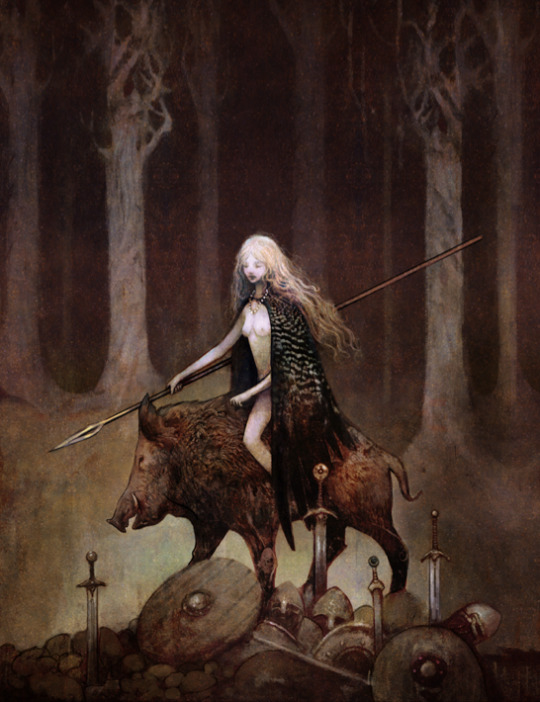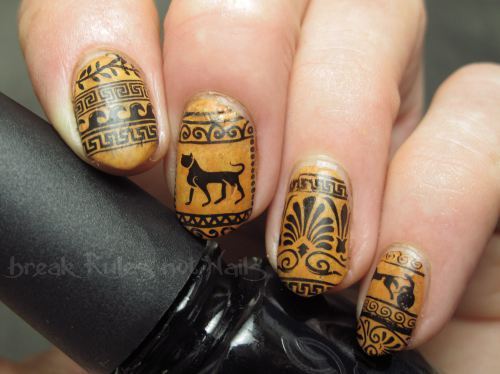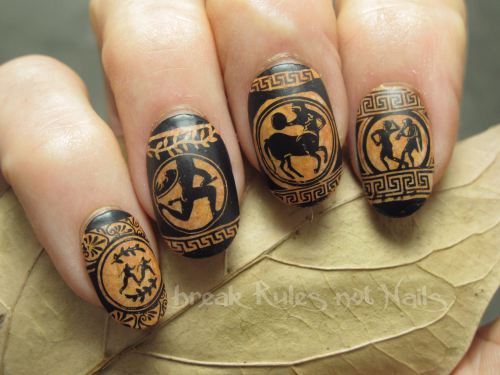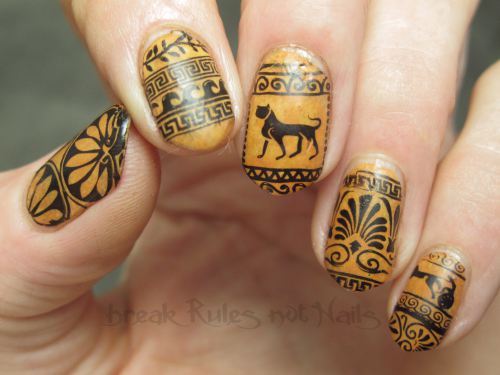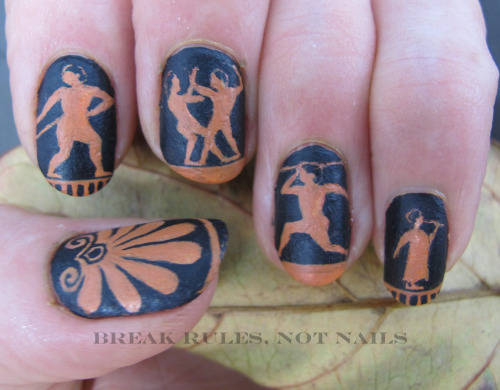Autarkeia means "self-sufficiency" in Ancient Greek. It was utilized by the Ancient Cynics as a way to show their adherence to ascetic principles. To embody autarkeia was to be like the gods.
Don't wanna be here? Send us removal request.
Photo

The Fascinus
In Ancient Rome, the fascinus was the embodiment of the divine phallus. A Roman effigy or amulet in the shape of a penis is known as a fascinum. The English word “fascinate” derives from the Latin fascinum and the related verb fascinare, that is: “to enchant or bewitch using the power of the fascinus.” In Ancient Rome it was believed that if a person cast a hostile look towards somebody else, the victim of this evil eye would be cursed - envy was thought to bring bad luck to the person envied. The humorous fascinus was believed to work as a medicus invidiae or a “doctor for envy” by making people laugh and thus preventing any jealous or malicious glances towards the person who wore or held it. The phallus is often winged or comically enlarged because the Ancient Romans considered exaggerated or strange images to be the most amusing - besides the fascinus, effigies of hunchbacked men or deformed women were also used to deflect the evil eye.
Graphic representations of the effect the fascinus had on the evil eye can be seen in many Ancient Roman artworks - one mosaic depicts a phallus ejaculating into a disembodied eye, and a 1st-century terracotta sculpture shows two phalluses with arms and legs working together to saw an eyeball in half.
2K notes
·
View notes
Text
P.J. Parsons Renowned Oxford papyrologist Peter J. Parsons describes the process of editing papyri from Oxyrhynchus: "The pleasures of the [Oxyrhynchus] project have been threefold. First, there is the pleasure of the chase: open a box of unpublished papyri, and you never know what you will find — high poetry and vulgar farce, sales and loans, wills and contracts, tax returns and government orders, private letters, shopping lists and household accounts. Then, there is the pleasure of comprehension: as you decipher the ink, still black after two thousand years, you begin to make words out of letters and then sentences out of words; the eye looks for shapes, and the mind looks for sense, and the two in alliance will (all being well) turn a string of symbols into intelligible text. Thirdly, your new text finds its place within larger structures. A fragment of Greek Comedy may add a new scene to a play already known from other fragments; an edict of the governor of Egypt may join other documents to hint at reform and politics; the lease of a vineyard will contribute evidence about price-inflation and consumer preference. Throughout the process, the researcher becomes aware of a unity. Every fragment of every kind in every box belongs in one historical and geographical context — the reading, writing and working citizens of Oxyrhynchus, the City of the Sharp-nosed Fish." Excerpt from: Parsons, P.J. City of the Sharp-Nosed Fish: Greek Lives in Roman Egypt. London: Weidenfeld & Nicolson, 2007, xxvi-xxvii.
http://www.bricecjones.com/blog/pj-parsons-on-editing-papyri-from-oxyrhynchus
3 notes
·
View notes
Photo

For nearly a century, the dominant orthodoxy has been that the Iliad evolved over centuries before finally being written down.
Credit Illustration by David Hughes
1 note
·
View note
Photo

Odysseus and his men blind the Cyclops Polyphemus. Laconian black-figure cup, attributed to the Rider Painter; ca. 560-550 BCE. Now in the Cabinet des Médailles, Paris.
316 notes
·
View notes
Photo

Think I’ve just found my next knitting project.
383 notes
·
View notes
Photo

Bronze statuette of the Etruscan goddess Menvra
Modelled on Greek figures of Pallas Athena, or Palladion, with raised spear (or lance) and shield and wearing the aegis. The helmet, similar in form to the Attic helmet worn on Greek copies of the Athena Parthenos, is shown with the cheek flaps raised. Unusually, the goddess is barefoot, lacking the usual sandals. As with the other Etruscan figure, right, Menvra is shown as much slimmer than her Greek counterparts.
From Apiro, Italy. 4th century BC.
via > my-favourite-planet.de
Photo Courtesy of: David John
199 notes
·
View notes
Photo

“What? Do I want to take my aviators off for the picture? Are you kidding me? I look baller. Now quick, take the shot. This thing’s heavy.” Underwater archaeology is clearly the way forward.
520 notes
·
View notes
Photo

mousehunt
Biblia porta, France 13th century
Lausanne, Bibliothèque cantonale et universitaire de Lausanne, U 964, fol. 354r
1K notes
·
View notes
Photo
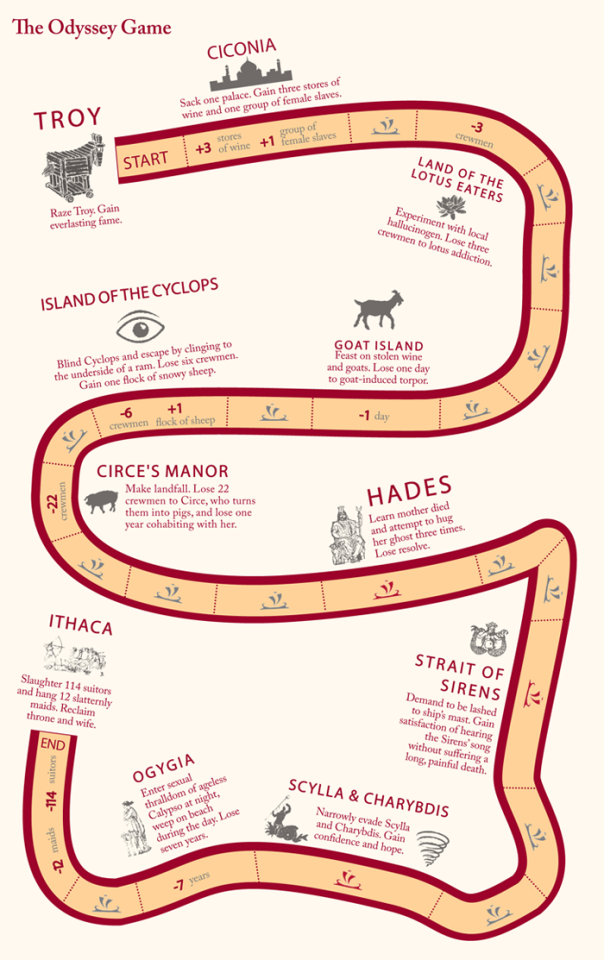
The Odyssey Game: Lose years, gain strength, return to wife.
2K notes
·
View notes
Photo

Bronze head from a full length portrait (perhaps of the poet Sophocles)
Hellenistic Greek, 2nd century B.C.
The British Museum
815 notes
·
View notes
Photo



Series of Greek Tragedies on at the Almeida Theatre
2K notes
·
View notes
Photo

ancient-serpent:
Relief plaque of a cobra on a neb basket, Egypt, 400-30 BC
0 notes
Photo

The Judgment of Paris, Italian (Tuscan) school (”Master of the Judgment of Paris”), ca. 1450-55
226 notes
·
View notes
Photo

This 14th century depiction of Patrick (seated), is though to be the earliest surviving image of the Irish saint
198 notes
·
View notes
